It is impossible not to notice all the corrugated iron-clad houses when travelling in Iceland. This uniquely Icelandic architectural feature caught on here because it is an excellent building material for Icelandic weather.
Many of those beautiful old houses are around Tjörnin – or the Pond in downtown Reykjavík. It is a great spot to take a short walk.
The age of turf houses
Since the settlement, Icelanders mostly lived in turf houses of various makes. They built settlement huts with long fires in the middle during that era, as other Scandinavians did. They had curved, long walls built with turf, rocks, and timber. Of course, other characteristics of the longhouses were two rows of pillars in the middle and the long fire.
Then for the next 900 years, Icelanders pretty much lived in this kind of house. However, they became smaller through the centuries as timber became increasingly difficult to obtain. By the 18th century, the so-called passage farmhouses were the most common. They were built a bit like a row of houses connected with a hallway. The front of the house had the only timber in the building and included the front door.
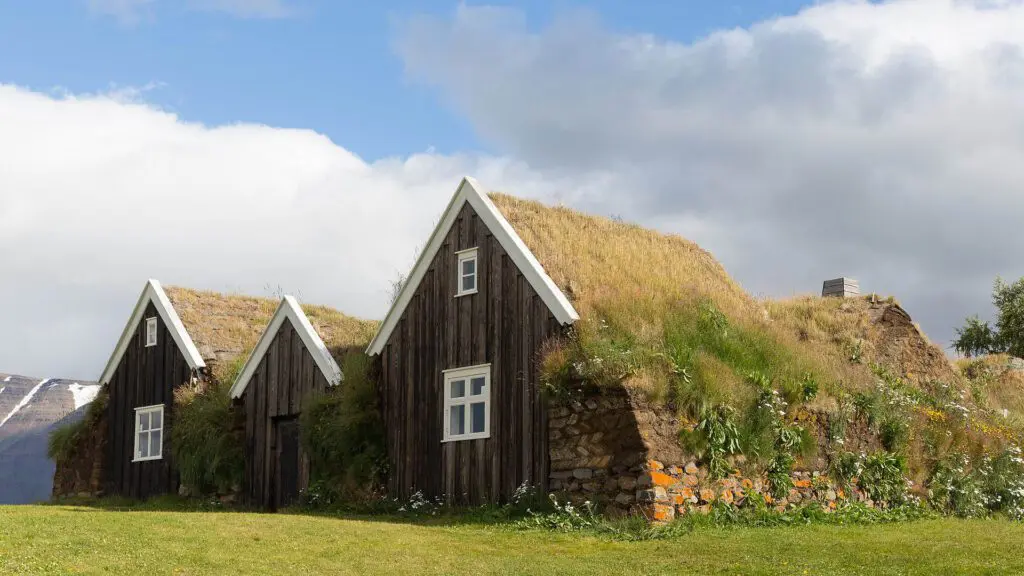
During the 18th century, houses started to change for the upper class. Skúli Magnússon, the first Icelandic sheriff in Iceland and sometimes called the father of Reykjavík, lived in one of the first stone houses built in Iceland. The house, designed by a Danish architect, was constructed on Viðey Island between 1753-1755. The idea was to teach Icelanders new building techniques, especially with hewn rocks. After Viðey Island, the Danish government erected a few stone buildings, such as the Government building in Lækjargata (originally a prison), Bessastaðastofa (where the President lives), Reykjavík Cathedral and Bessastaða Church.
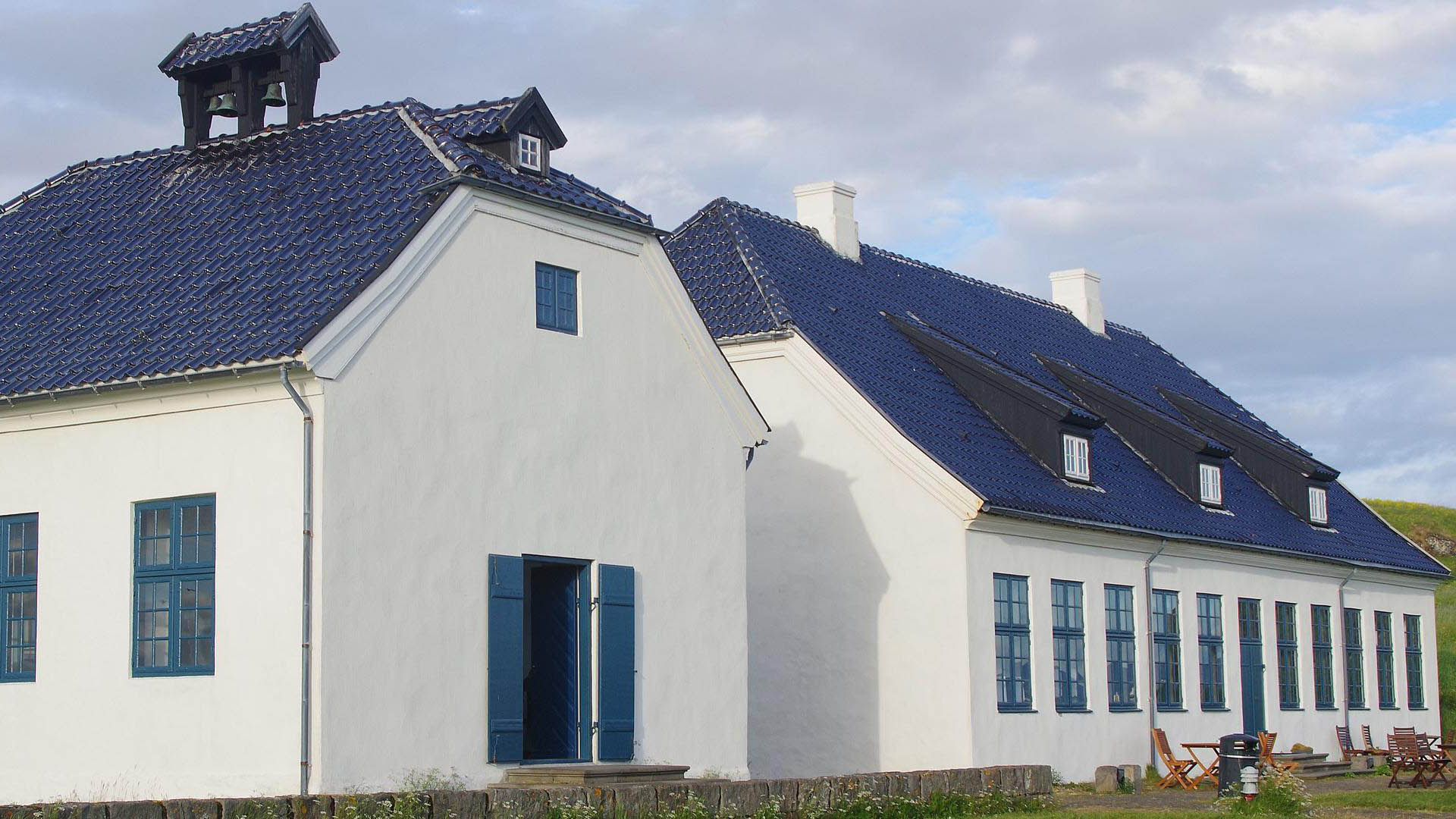
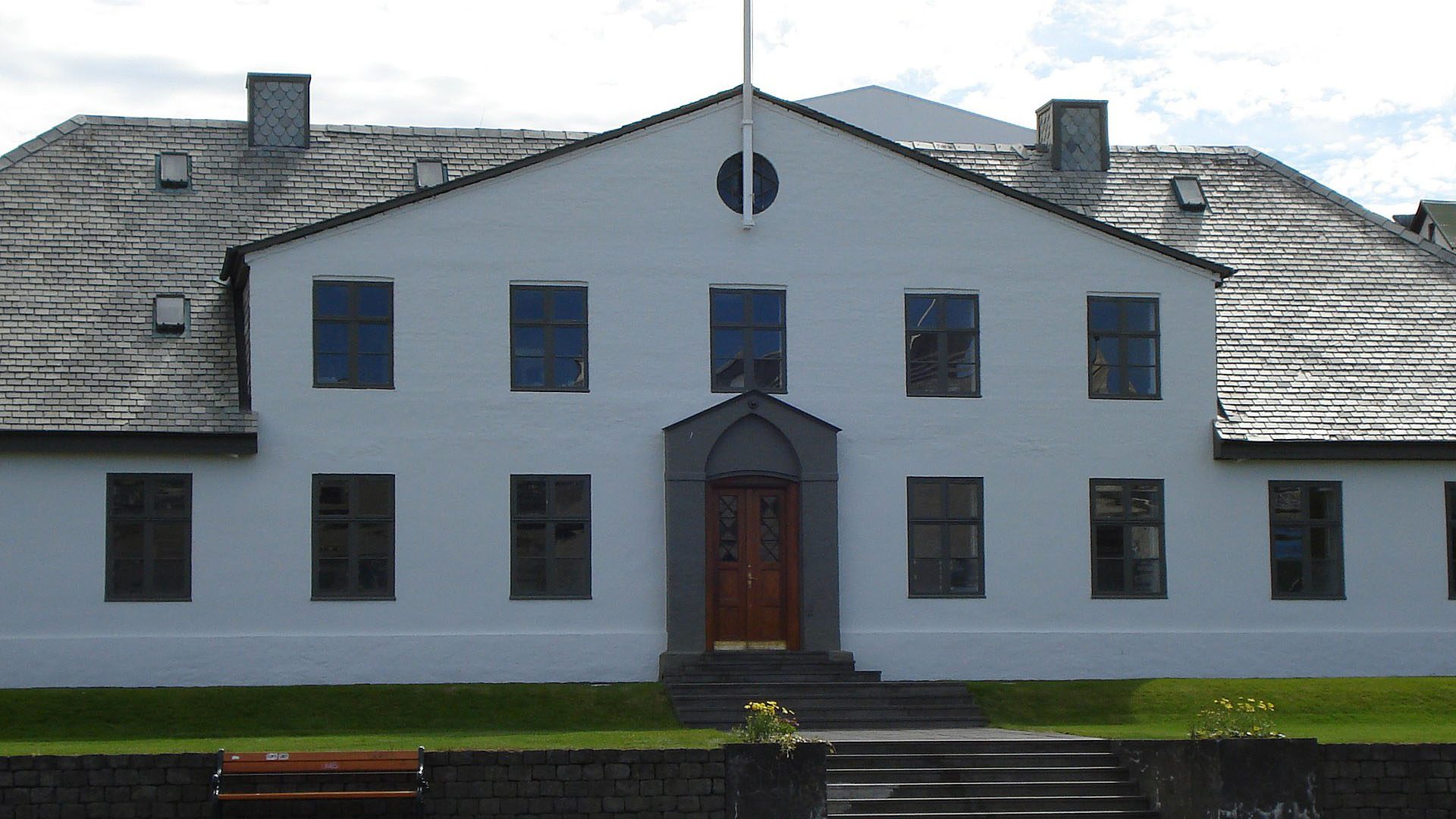

Building from hewn stone did not catch on, but when the Parliamentary building was built around 1880, many small stone cottages were constructed from leftover rocks.
Urbanisation in Iceland
Urbanisation in Iceland started relatively late compared to other European countries. The primary professions continued to be fishing and farming until well into the 20th century. By the middle of the 18th century, urbanisation started, and in 1785, Reykjavík became an official town with 167 inhabitants.
With the new-fangled township status, people started building new so-called half-timber houses. They still weren’t typical at all because timber was expensive and very hard to come by until the 19th century. Turf houses were still the most common type until the turn of the 20th century. And there were, of course, timber buildings before that time as well.
Half-timber houses were built of brick and timber. Some were then either clad in wood or plaster.
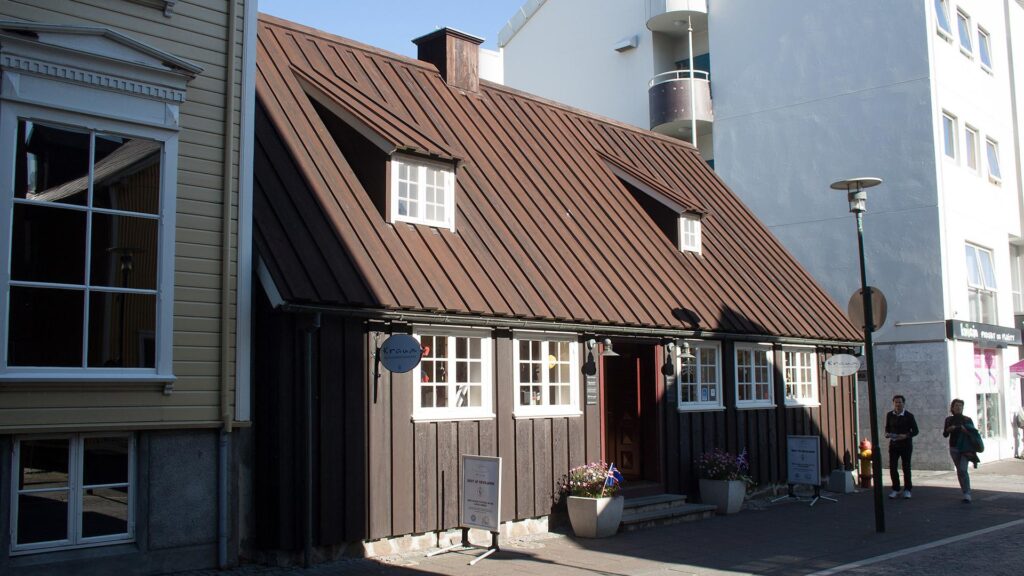
Oldest house clad with corrugated iron
In the late 1870s, corrugated iron came to Iceland from England and slowly but surely took over as the most popular house cladding material. First, it was new cladding on older houses, but with a Reykjavík City regulation, it became a design feature.
The oldest house in Reykjavík, clad with corrugated iron, is on the corner of Vesturgata and Ægisgata – built in 1881. Around 1990 there were ideas about tearing it down or moving it, but thankfully that didn’t happen since it is an important part of Iceland’s architectural history.
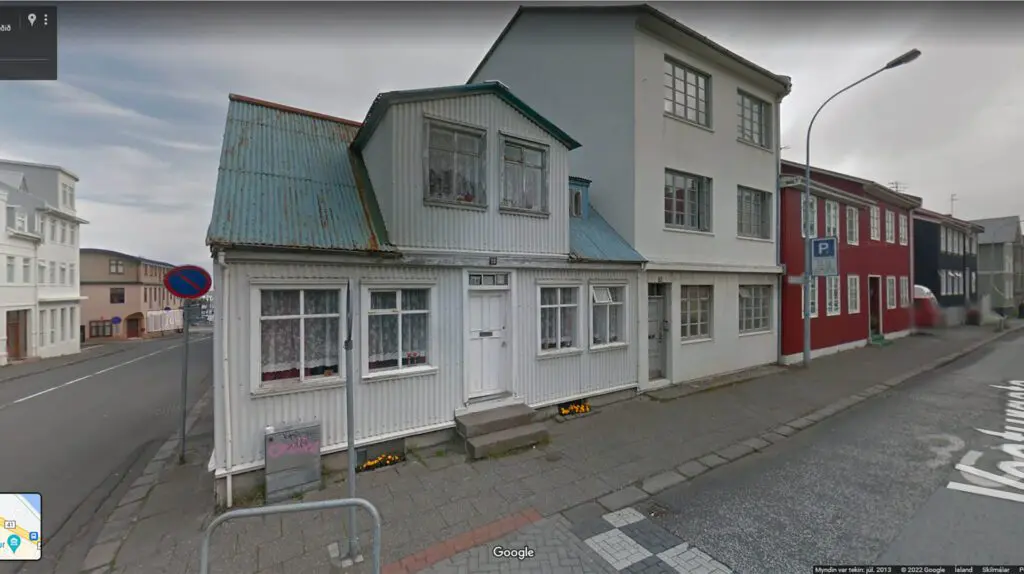
Corrugated iron houses – the new fad
Icelanders have a reputation for being keen on new things, whether it is the latest fashion or technology. Corrugate iron was no different.
The new timber houses were clad with corrugated iron. It was made weatherproof by dipping it in molten zinc. People then painted the houses in bright colours.
At the turn of the 20th century, it became popular to buy so-called catalogue houses. They were in an elaborate “Swiss style”, which was popular in Scandinavia then. They included a fabulous chalet-like makeover of existing traditions that often feature hand-carved wooden trimmings.
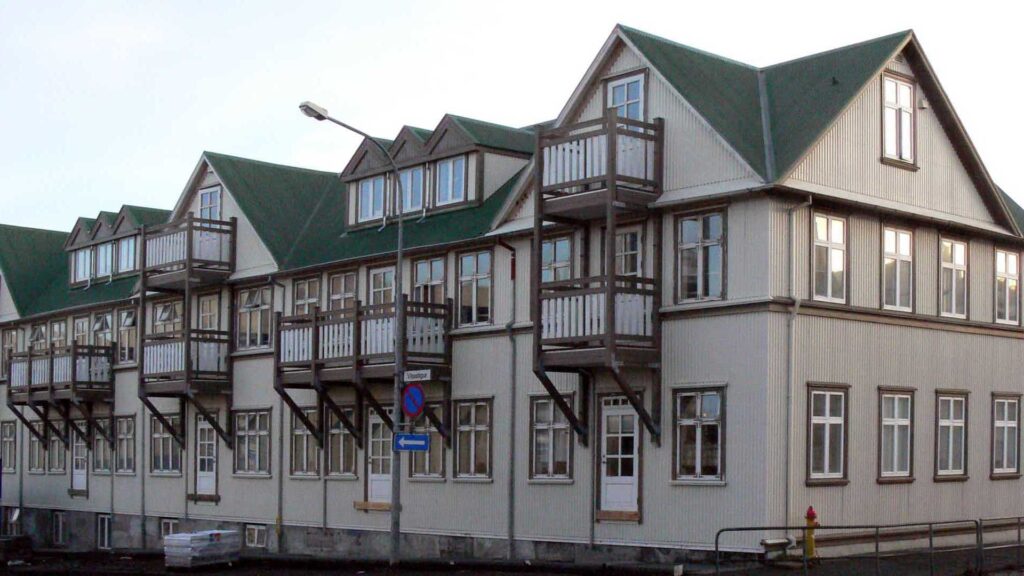
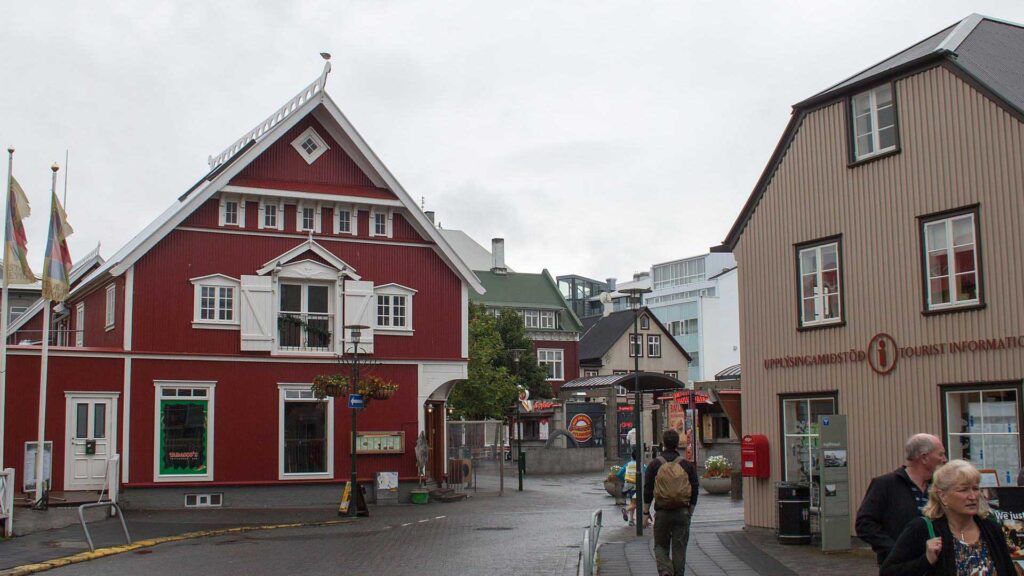
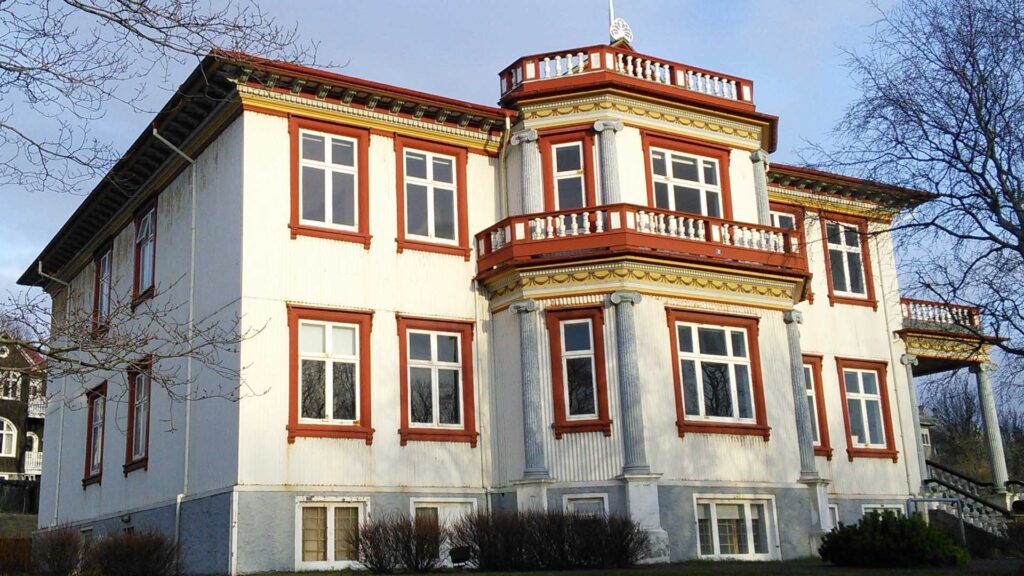
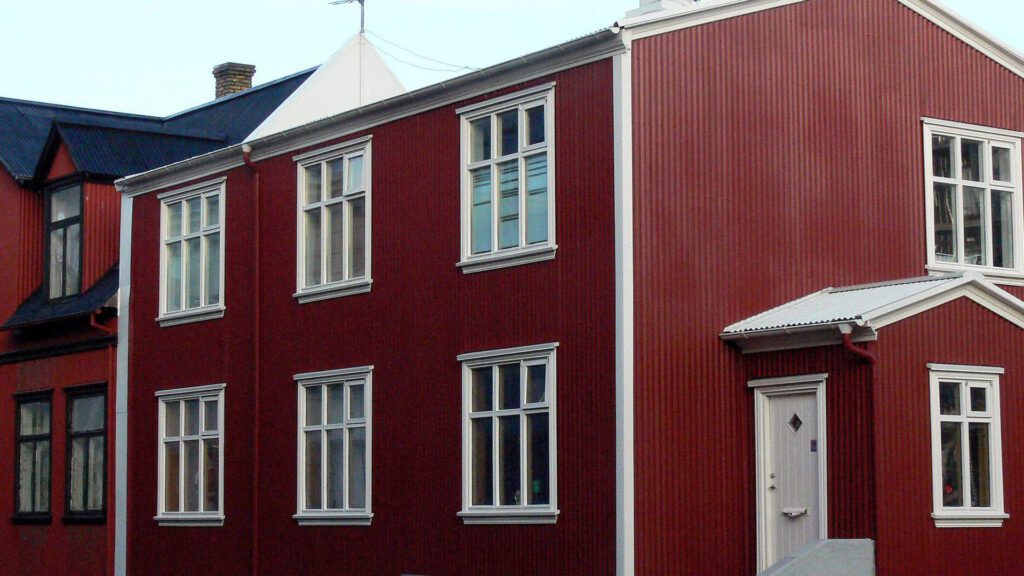
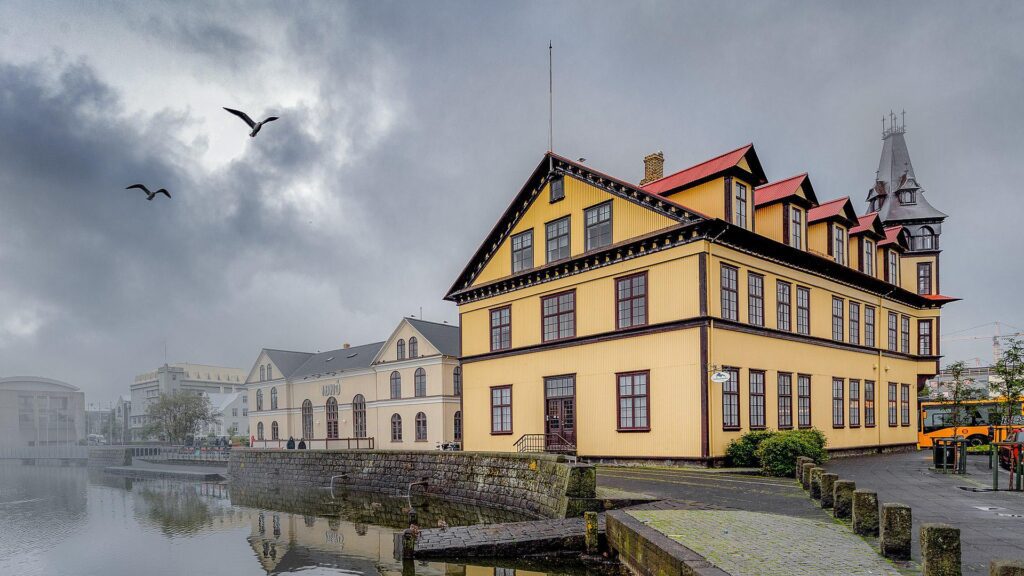
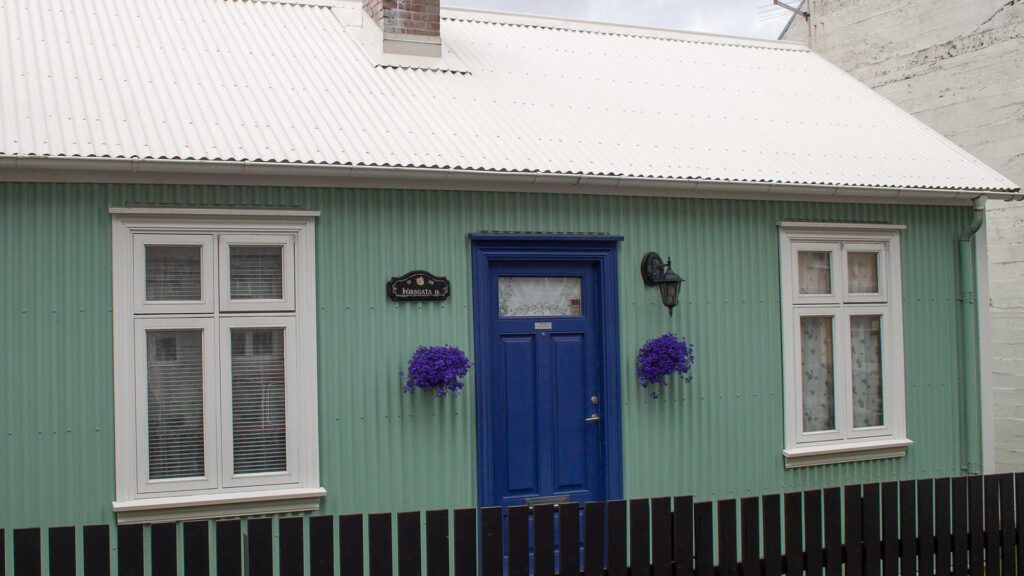
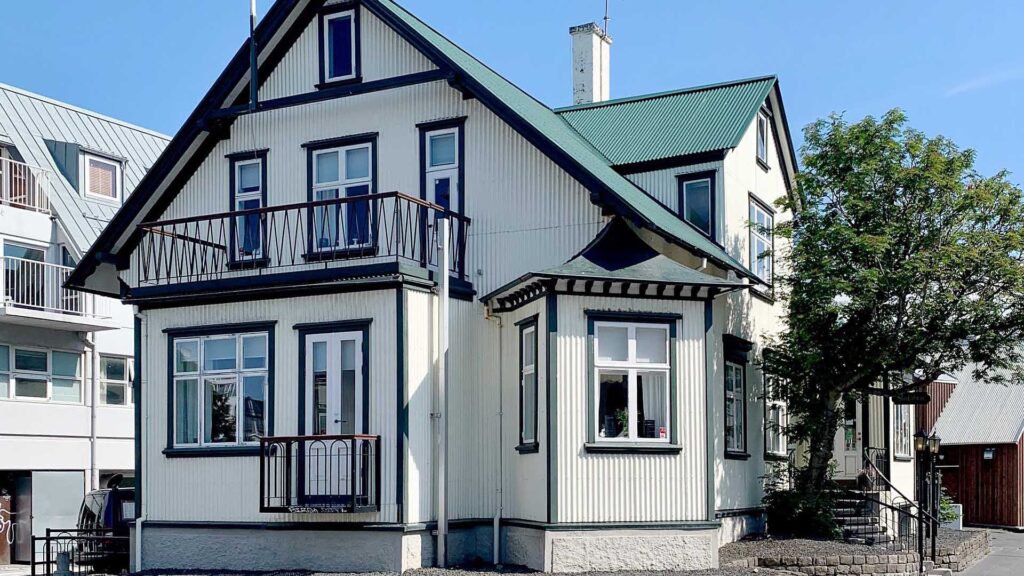
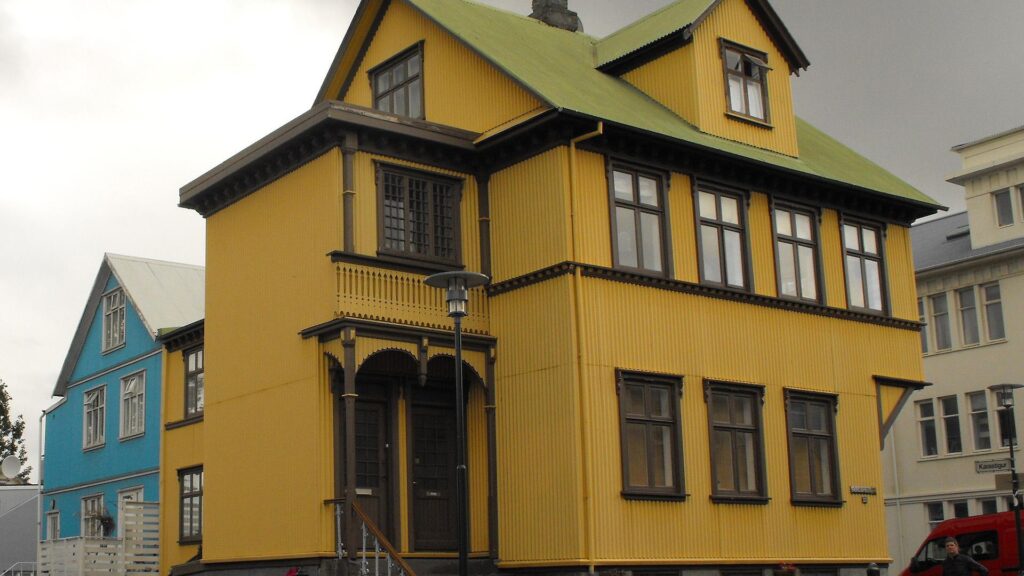
The Great Fire 1915
The corrugated-iron house age was prevalent between 1880 and 1925. However, in 1915, a devastating fire broke out in Reykjavík’s centre. Twelve houses in Austurstræti, Pósthússtræti and Hafnarstræti burnt to the ground, and two men died. This horrendous fire understandably shocked people to their core, and it ended with a new building regulation, confirmed a couple of months later:
“From now on, it will not be allowed to build houses in Reykjavík from other materials than stone, concrete or other materials which are not more unreliable in the opinion of the building committee and the town council. Exceptions are made for houses built further than 3.15 metres away from the plot boundary and at least 2 metres away from the street’s edge. It is permitted to build houses clad with corrugated iron in such places, with a floor area no larger than 75 m2. They cannot be taller than two storeys with apartments no higher than two floors above the basement.”
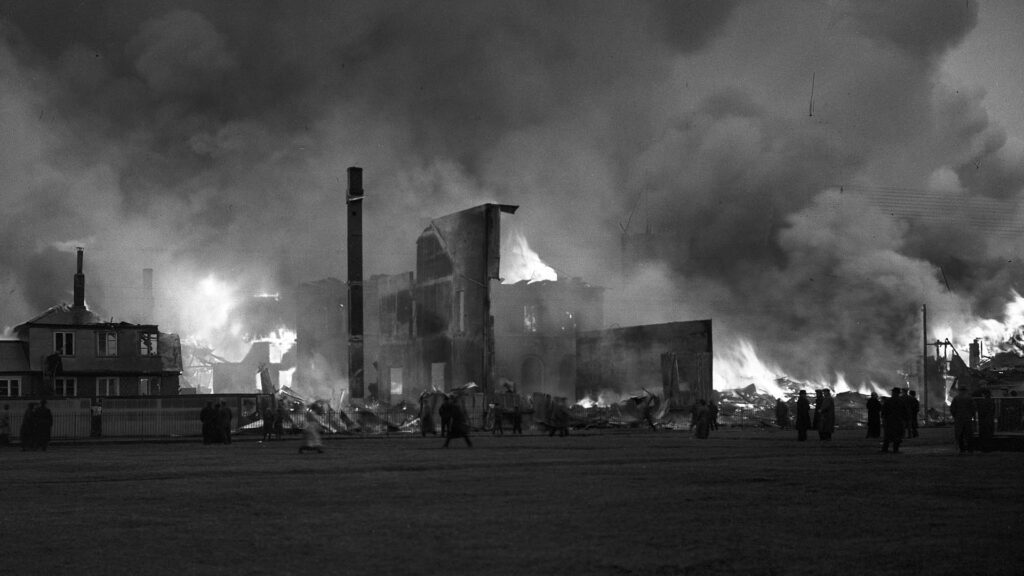
The Concrete era begins
This pretty much ended the corrugated iron era in Iceland, and the so-called concrete period began. From the middle of the 20th century until the 1980s, people found the houses old-fashioned, and many were torn down. In many cases, the houses had become very rundown during those decades. Thankfully, enough people cared about the houses and the history and fought for their preservation. Today, houses are automatically protected when they get 100 years old.
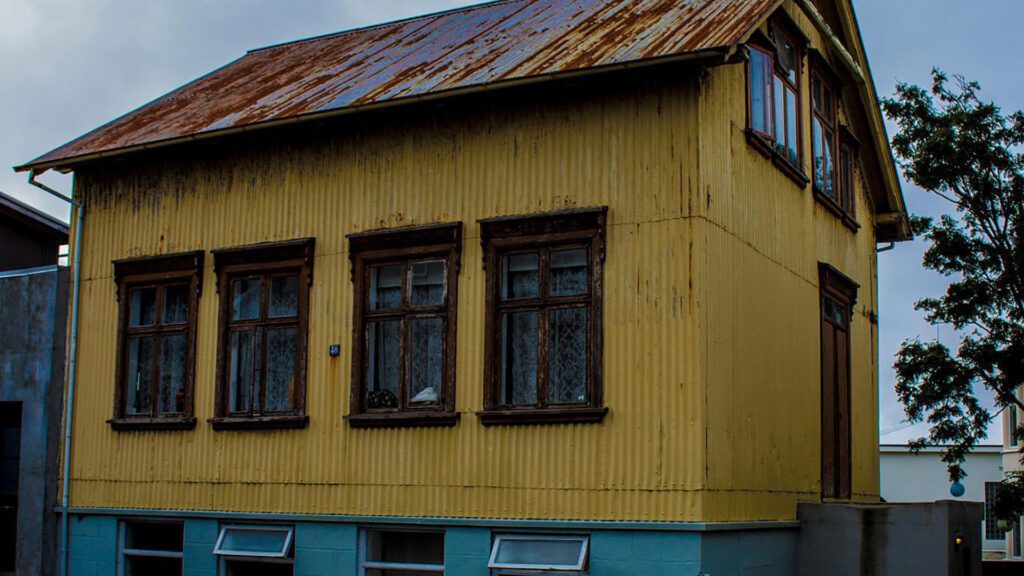

Please signup HERE for our newsletter for more fun facts and information about Iceland!


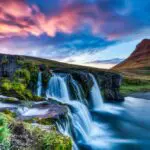
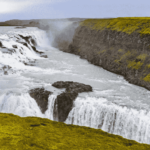
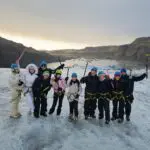
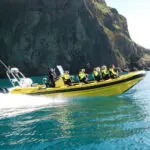
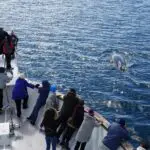
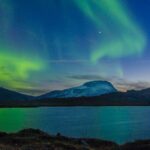
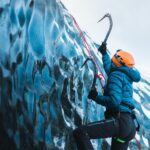
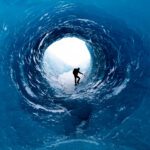
I really enjoyed reading this!